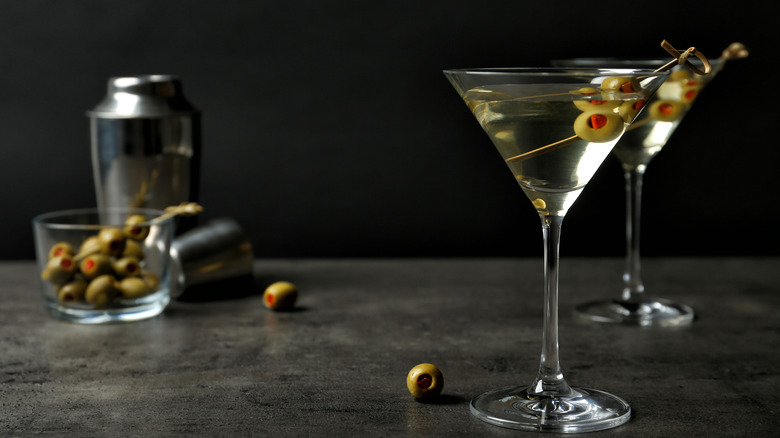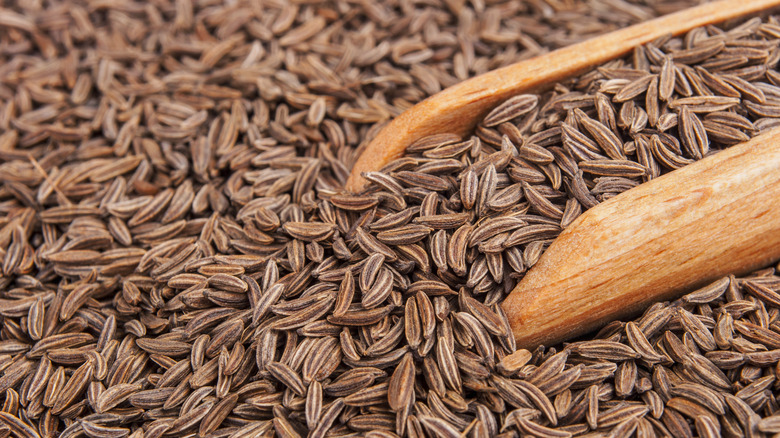For A More Savory Martini, Skip The Vodka And The Gin
There are limitless renditions of the martini, each with its own set of ratios and ingredients, which begs the question as to what is actually classified as a martini. While some recipes dip further into cocktail territory than proper martini classification, there are generally two classic takes on the beverage, although you might just want to skip both the iconic gin or modern vodka base for a more savory (yet lesser known) spirit.
Like many cocktails, the origins of the martini are murky. However, it's believed that the martini was derived from the Martinez, a sweet bevy crafted with gin, red vermouth, maraschino liqueur, and bitters. Despite its saccharine roots, Maine Spirits explains that as liquor became more well-crafted in the late 19th century, cocktails no longer needed to hide behind sugar, prompting many to adopt a preference for dryer drinks like the dry martini we recognize today.
Although the martini initially had equal parts gin and vermouth, Difford's Guide reports that ratios can vary up to 15:1, and even replace gin with vodka. While both spirits may have similar ingredients, production processes, and alcohol levels (40% ABV), VinePair explains that the difference boils down to gin being infused with juniper berries. Consequently, where a traditional gin martini has an herbaceous flavor, a vodka martini offers smoothness thanks to the spirit's neutrality. If, however, you've been inspired by the trend of spicy, briny, and savory cocktails, then you might want to consider an entirely different base — introducing, aquavit.
Just add aquavit
A Scandinavian spirit, aquavit is seriously savory. Fermented and distilled like vodka, the liquor is then infused with caraway or dill (sometimes even star anise, fennel, coriander, citrus, juniper, or peppercorn) and can be bottled as is, or matured in sherry casks, reports Imbibe Magazine. With a woodsy musk and a flavor that tastes reminiscent of malty rye bread, aquavit can add umami to any cocktail, especially a martini.
When working with aquavit, Epicurious suggests opting for a clear and un-aged variety that's rich in botanicals, and mixing either two or three parts with one part dry vermouth, serving with some caper brine for a "dirtier" rendition. What makes aquavit particularly unique in a martini is that it provides an intensity like gin, just on a more savory scale since it's laced with fresher, more grassy herbs.
The only rule you need to respect when it comes to a martini (aquavit-based or otherwise), is that it should always be served in a martini glass. Not only are its steeply sloped slides aesthetic, but they're also functional. According to Sipsmith, the wide brim increases surface area to help the spirits open, in addition to preventing ingredients from separating, and supporting a garnish skewer. Given that a martini should always be served frosty, its stem also acts to keep things ice cold, making each savory sip of an aquavit martini all the better.

